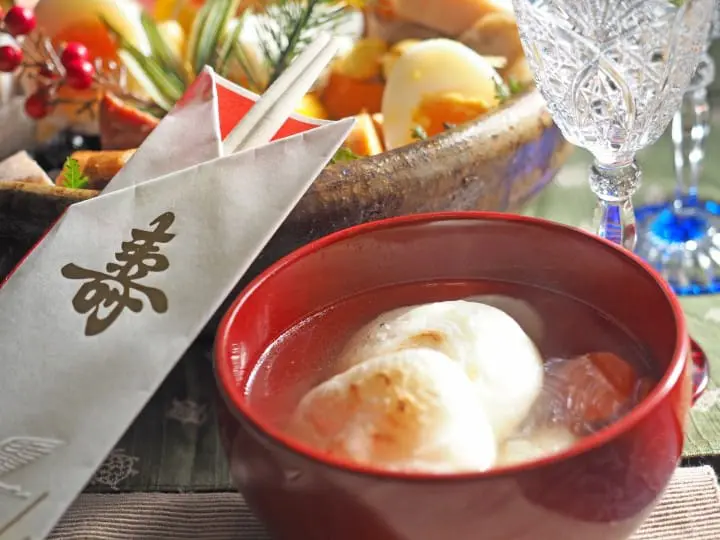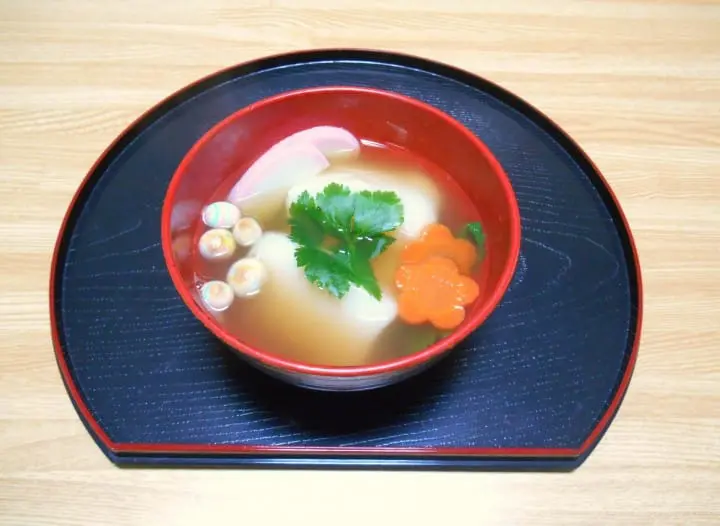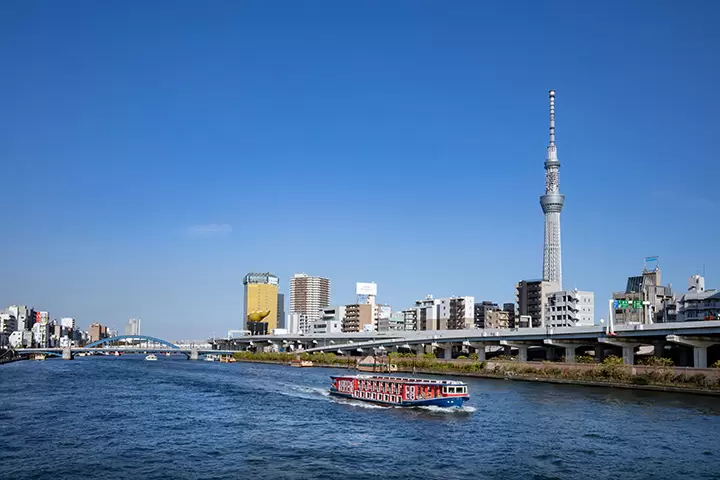Ozoni - Festive Soup Eaten At New Year's

Ozōni, or simply "zōni", is a traditional Japanese soup served with mochi rice cakes inside. It is eaten at New Year's to wish for a happy and prosperous upcoming year. Today we'll learn how ozoni differs from region to region in Japan.
What Is Ozōni?

Ozōni, a traditional Japanese soup filled with mochi rice cakes, is served in a lacquer bowl at New Year's in Japan. At this time Japanese people pray for an abundant harvest and for the health and safety of their families. It is eaten for breakfast on the first three days of the new year (January 1st, 2nd and 3rd). The soup can be miso-based or it can be a clear soup made from shōyu (soy sauce), salt and soup stock. Vegetables, seafood, chicken and other ingredients are commonly added to the soup but usually vary from place to place in Japan. The soup often contains ingredients particular to that specific region, endearing itself to the local Japanese with its furusato no aji, or hometown taste.
The Origins of Ozōni

There are various theories and opinions on how ozoni got its start, but many have said that its history dates back to the Heian Period (794-1185). To Japan's early agricultural people, mochi made from glutinous white rice was an important food staple. In particular, kagami mochi (*1) became a special food used at celebratory events.
According to many sources, omochi, daikon (Japanese radish), carrots, satoimo (literally 'village potato') and other ingredients that were offered up to the gods and Buddha, were then placed in the year's first drawn water and simmered over the year's first fire, starting the tradition of ozoni.
*1 Kagami mochi: flat, round mochi rice cakes offered to the gods and Buddha at New Year's, that are stacked two or three tiers high with smaller mochi sitting atop larger ones, and are used as decorations inside homes and temples.
Ozoni Differs from Region to Region
Next we'll explain how the flavors and ingredients of ozoni differ from area to area in Japan.
Differences In Omochi
In the Kansai region, enman, or round-shaped mochi conveying peace and harmony are served in the ozoni, in contrast to the square / rectangular-shaped kado mochi commonly served in the Kanto and Tōhoku regions. In Hokkaido and the Hokuriku region, there isn't a strong preference for either the round-shaped or rectangular-shaped mochi.
In the eastern part of Japan, mochi is often baked in order to enhance its flavor and aroma, whereas in the Kansai and Chūgoku regions (not including Hiroshima prefecture) the mochi normally isn't baked.
However in Okinawa, from the past to the present, there isn't a custom of eating ozoni.
Differences in Seasoning
In the Kansai region, miso (a soya bean based seasoning) is often used to make the ozoni soup, and in particular, white miso is the preferred choice in the Kyotoarea. In the western part of Japan (Chugoku region, Shikoku region, and Kyushu region), ozoni means a clear soup made from kombu seaweed and katsuobushi (dried bonito flakes). In one area of the Noto Peninsula (Ishikawa prefecture) and in the Izumo region (the eastern part of present-day Shimane prefecture), azukijiru, or red bean paste soup, is eaten.
Differences in Ingredients
Generally speaking, ingredients found in the local area are put into the ozoni soup, starting with vegetables such as daikon (Japanese radish), carrots, satoimo (potato), gobō (burdock root), mitsuba (parsley-like herb) and so on. In Niigata they use salmon and ikura (salmon roe), in Chiba prefecture they use nori seaweed, in Hiroshima prefecture they use kaki (oysters), in Shimane prefecture they use hamaguri (clams) and other ingredients, and in the mountainous areas kinoko mushrooms and sansai, or edible wild plants, are added to the ozoni soup.
One unusual version of ozoni is kurumi (walnut) ozoni popular along the coastal areas of Iwate prefecture. This is a shōyu-based clear soup with mochi, vegetables (including edible wild plants) and tofu added to it. There are two ways it can be eaten; one way is to eat it as is, and another way to enjoy it is to prepare a sweet walnut sauce in a separate bowl into which the mochi from the o-zoni soup is dipped into and eaten.
In Kagawa prefecture, ankoro mochi (mochi covered with red bean paste) is put into a soup made with white miso and filled with vegetables.
But Fukui prefecture's ozoni is the ultimate in simplicity. Mochi is placed inside a miso-based soup and kezuribushi (dried bonito flakes) are lightly spread on top. That's it. No other ingredients are added. One reason is that osechi (New Year's food) is also served, but another reason is that this simplicity accentuates the beauty of the mochi and allows one to fully appreciate the flavor of the soup.
Since each region of Japan has its own special version, no matter where you visit in Japan you'll have a great opportunity to sample one of ozoni's many varieties!
日本への訪日外国人の方が、もっと増えますように!



































![[Just a short distance from Nagoya] Popular Taiwanese YouTuber Alan tours Aichi, Tokoname!](https://resources.matcha-jp.com/resize/720x2000/2026/01/08-255181.webp)
